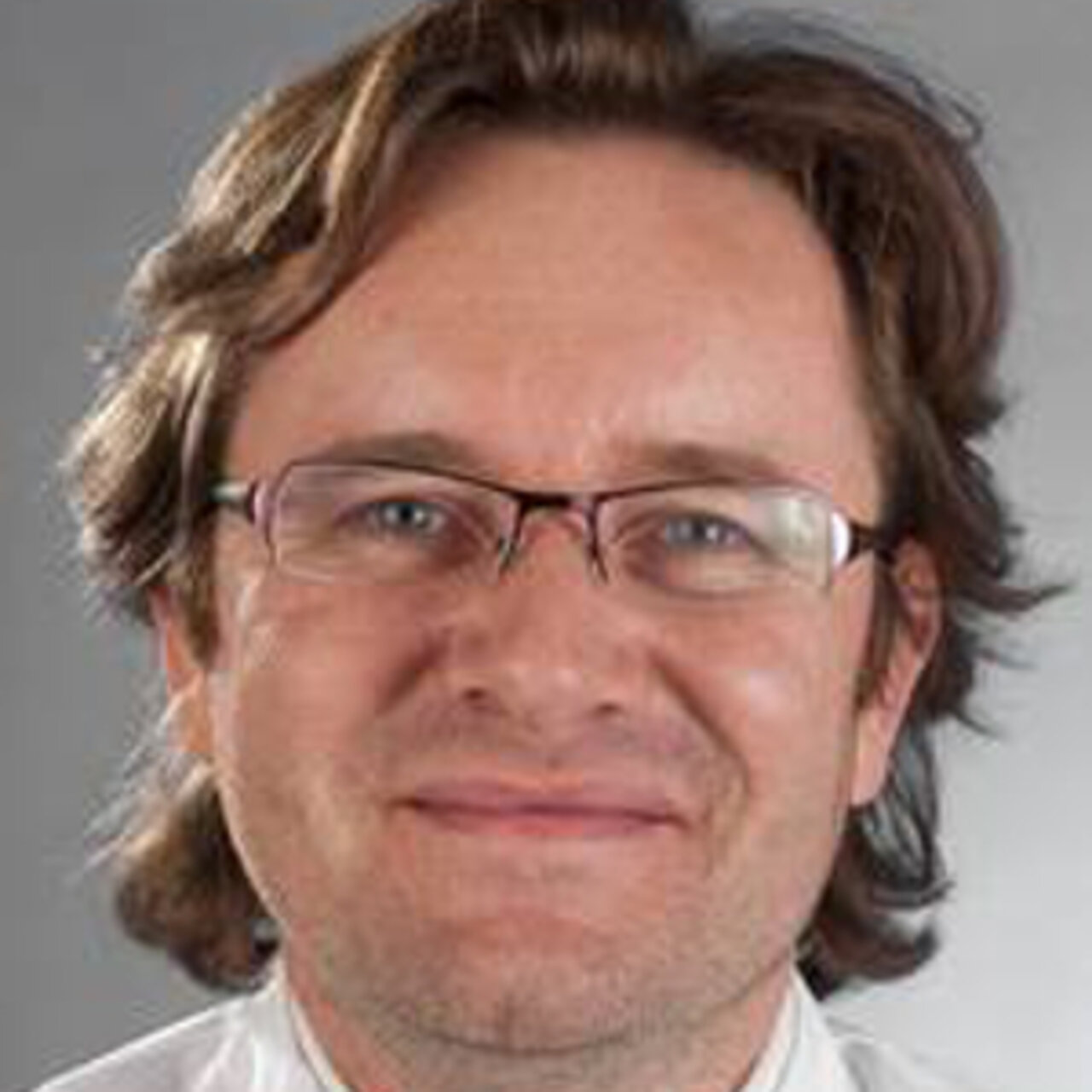Specialists in Brainstem lesions
7 Specialists found
Information About the Field of Brainstem lesions
What is the brainstem?
The brainstem belongs to the central nervous system, which is comprised of the brain and the spinal cord. The brainstem is situated in the innermost portion of the brain and it contains different regulatory centers for vital functions.
The brain can be organized into different sections. A general division differentiates between the cerebrum, the cerebellum, the diencephalon and the brainstem. The brainstem in turn consists of the midbrain, also called the mesencephalon, the pons, and the medulla oblongata, forming the connection to the spinal cord.
The various sections of the brain fulfill several different functions. Information received by the cerebrum is available to our consciousness, whereas the cerebellum mainly performs motor functions. For its part, the diencephalon relays the various bits of information to the cerebrum.
The pons comprises nerve fibers primarily designed to exchange information between the two hemispheres of the brain.
The midbrain holds a large number of nerve fibers that pass on a different sorts of information between the individual parts of the brain.
Among these are, for example, the fibers of the auditory and visual pathways, but there are also important motor centers in the midbrain. Similarly, some of our twelve cranial nerves originate from the midbrain. These represent the origin of the respective nerve fibers.
The cranial nerves perform the most versatile tasks in our body. Some examples are the sense of touch around the head, supply of the various muscles of the head and face, as well as autonomic functions that, among other things, maintain the cardiovascular system in balance.
The medulla oblongata joins the brainstem below and, like the midbrain, incorporates core areas of some of the cranial nerves as well as important regulatory centers such as the breathing and circulatory centers.
The brainstem consequently serves multiple and vital functions, so a brainstem lesion may have profound consequences.
What are brainstem lesions?
Put simply, brainstem lesions refer to any damage to nerve tissue in the region of the midbrain, the pons or the medulla oblongata. A number of symptoms will then develop, which is referred to as a brainstem syndrome.
Brainstem syndromes can be categorized as midbrain syndromes, pons syndromes, and medulla oblongata syndromes based on where the damage occurs. The symptoms vary according to what areas are affected.
Likewise, the severity of the symptoms is determined by the function of the damaged structures as well as the extent of the damage.
There are many different brainstem syndromes, which are distinguished according to the symptoms.
Causes: How do brainstem lesions arise?
Brainstem lesions can have a wide variety of underlying causes. Various structures of the brainstem may sustain damage from acute events or chronic processes. Most often, blood flow problems to the corresponding area cause damage to the tissues and nerves. This can, in turn, be caused by a number of factors.
Brain infarcts
One of the more frequent causes of a brainstem lesion is a stroke. There is a distinction here between an ischemic stroke, where blood supply to the brain is disrupted by a clot in a blood vessel, or a hemorrhagic stroke, where bleeding exerts severe pressure on brain tissue. Ischemic strokes are far more common than hemorrhagic strokes.
The reduced blood flow to the brain tissue resulting from the stroke can have a strong impact on the function of the respective areas. In a lot of cases, the cranial nerves are compromised, causing diverse deficits in motor function and also in sensibility.
Strokes are always a medical emergency and all cases need to be treated as quickly as possible.
Trauma
Other possible causes of brainstem lesions are accidents with head involvement, referred to medically as traumatic brain injury.
Trauma can occur in various degrees of severity. In this respect, grade I traumatic brain injury shows no brainstem lesion, grade II presents with a one-sided brainstem lesion, while grades III and IV have a two-sided brainstem lesion.
Inflammatory processes
A number of inflammatory processes may also give rise to brainstem lesions. One relatively common condition in which such a lesion can develop is multiple sclerosis.
It is an autoimmune disease in which chronic inflammatory processes take place in the central nervous system. This can also affect the brainstem.
Tumors
Tumors can be benign or malignant new tissue growths. Although a tumor is a benign mass and hence can be distinguished from cancer, its growth can press on neighboring structures and thereby cause damage.
This is how a tumor in the area of the brain stem is able to cause a brain stem lesion. In many cases, the tumor grows slowly and leads to a chronic course of the brainstem syndrome. A thorough diagnostic approach is crucial for this reason.
What are typical symptoms of brainstem lesions?
If a brainstem lesion presents with a combination of symptoms, this is referred to as brainstem syndrome. Its clinical picture is entirely determined by the localization and extent of the damage.
Since the brainstem contains the different core areas of the cranial nerves, a respective lesion is usually seen in a failure of certain cranial nerves.
A typical appearance of a brainstem lesion is the so-called crossed brainstem syndrome. In this case, cranial nerves are damaged on the side of the lesion along with sensory and motor impairments on the opposite side. This may be explained by the fact that a major part of the brain is organized contralaterally. In other words, the different nerve fibers cross sides as they pass through the brain to the opposite side, so having a right-sided cranial nerve supply structures located on the left side of the body and vice versa.
Cranial nerves carry out a broad range of tasks, which means that a lesion can result in deficits in the facial muscles, the sense of touch, taste, vision, hearing or balance, for example. Dysfunction of the swallowing process can also indicate damage to cranial nerves.
However, some of the cranial nerves also fulfill autonomic functions which are those that cannot be actively controlled by consciousness and hence also in this regard there may be implications. Thus, when it comes to brainstem syndromes, there may be alterations of sweat or tear secretion, as well as circulatiory problems.
The brainstem contains key regulatory centers including respiratory and circulatory centers. If there are lesions affecting one of these areas, it can be life-threatening for the patient under certain circumstances. The vomiting center is frequently involved, which means that patients often have to vomit at first.
In such cases, prompt medical treatment is strongly advised to maintain essential bodily functions. Sometimes, persistent symptoms may even call for permanent medical monitoring in an intensive care unit.
How do doctors diagnose brainstem lesions?
If a brainstem lesion is suspected, it is essential to perform a detailed diagnostic procedure. This involves taking a medical history, in which questions regarding possible accidents and the exact course of the symptoms over time are asked, and then a physical examination.
During this examination, the first signs of damage may already be apparent. A neurological examination is especially important to detect, for example, the failure of certain cranial nerves.
Neuroimaging techniques are also used in the diagnosis of brainstem lesions. First and foremost is magnetic resonance imaging, in which brain tissue in particular can be well visualized. Potential infarcts or bleeding can thus be well localized.
The so-called electroencephalogram, EEG for short, is able to measure the electrical signals of nerves and can therefore also be used for the diagnosis of brainstem lesions. With the help of different electrodes, brain waves can be measured. As part of special examinations, the response of the nerves to acoustic and visual signals can also be shown, which especially makes a precise investigation of the auditory and visual pathways possible.
What are the methods of therapy?
Brainstem syndromes are always treated according to the cause of the lesion. For this reason, different treatment options are available.
If the cause of the lesion is a brain infarct, it should be urgently determined whether it is due to vascular occlusion or bleeding. According to the type of stroke, therapy can then involve either stopping the bleeding or opening the vessel to restore blood flow to the brain tissue. A cerebral infarct always needs to be treated acutely.
Also, in the case of severe damage to the brain stem with impaired respiration and circulation, immediate corrective measures must be initiated.
Deficits of the musculature can be a long-term problem for the affected person also after the cause of the brainstem lesion has been treated. Particularly if the facial muscles are compromised, it can bring about immense distress for patients. This is why different therapy concepts can be employed, which include physiotherapy as well as speech therapy and occupational therapy.
Which doctors & clinics specialize in brainstem lesions?
Because brainstem syndrome is always a serious pathology, you should always consult experienced specialists.
All doctors and clinics presented here are experts in the field of neurology and have extensive experience in the diagnosis and treatment of brainstem lesions.
Our aim is to provide you with access to excellent medical treatment, which is why we are here to give you the opportunity to schedule your first consultation with one of our specialists quickly and easily.
Sources:
- Amboss, Nachschlagewerk für Mediziner
- next.amboss.com/de/article/1i02qf;
- „NeuroIntensiv“, Schwab/ Schellinger/ Werner/ Unterberg/ Hacke, Springer-Verlag, 1. Auflage, 2008
- www.aerzteblatt.de/archiv/188325/Akutes-Schaedel-Hirn-Trauma-mit-Bewusstlosigkeit







